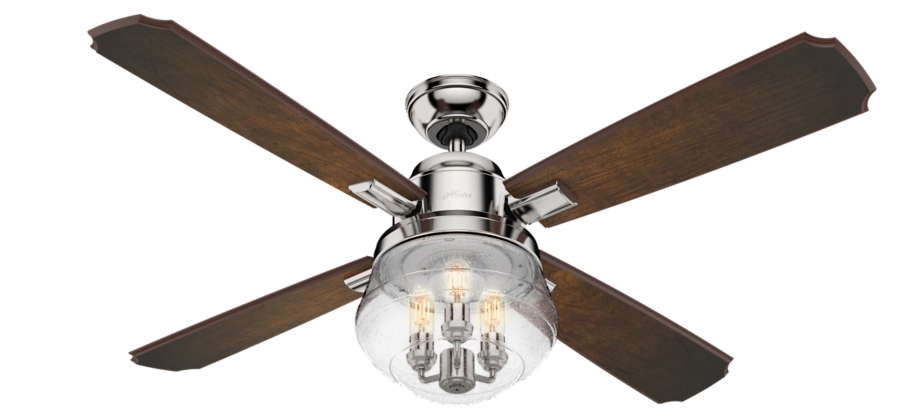The ceiling fan is one of the most sensible solutions for comfort, despite a virtual revolution in the comfort appliances industry. It is the steady and quiet whirl of the paddles that evokes the nostalgia of bygone days and sultry summer afternoons. It makes a room cozy and comfortable and much lower energy bills. Today’s ceiling fans have crossed a long path and provides benefit from more durable materials, better motors, more handsome finishes and intuitive controls. We here present an expert and unbiased guide to help you buy the best ceiling fan.
Ceiling Fan Controls
Most of the fans are mounted on the ceiling area. Always check that the unit has a capacitor design made by the same manufacturer. This will eliminate the hum and buzz. Fans in the electrical box may also be operated by some chains, brands, or remote control.
Fan Blade Sizes & Materials
The number of fan blades may vary from three to five, but the number of blades does not affect performance much. Although, it is said more the blades more air is moved due to the availability of larger space to grab air, the cost also increases with the number of blades. On the contrary, fans with longer blades will sweep more air than the shorter one without any extra costing. The preferable material for the manufacture of fan blades is natural wood and painted blades with cross-laminated veneer board. Blades made of smoke acrylic are easily washable.
Sizing & Locating a Fan
For a 144 sq. ft. Room a 42-inch fan, 44-inch fan for up to 225 square feet and a 52-inch fan for up to a 400-square-foot room are the perfect. For rectangular rooms over 18 ft. long, using two fans are recommendable. The best place to fix ceiling fan is at the center of the room, maintaining a distance of 24 inches from walls or sloping ceilings, and 7 ft. Above the floor. The safest way of hanging ceiling fans is by mounting them to traditional ceiling light fixture boxes, which can withstand heavy weight and centrifugal motion strains. The fixture boxes must be securely fixed to frames or must be attached to metal crossbars, hooks or special hangers meant for fans.
Judging Ceiling Fan Quality
A high-quality fan has several characteristics, and ultimately they will move air more quietly and efficiently. In these fans, all the minute details are taken care of, and the parts are made from high-grade material, classy designs, complimented with sport lasting and attractive finishes. The motor has several stages of speeds. But never choose a fan based on some ratings as they are not relevant as there are no universally accepted standards for this particular measurement. However, fans are rated by measuring the amount of air they move in cubic feet per minute (CFM).
Pitch length, distance from the ceiling and walls, revolution per minute (rpm) and the number of blades are the most important controlling factors for the circulation of air. Short blades with shorter pitch of 10° although can be swirled by a weak engine but will make a lot of noise. Longer blades with a 14° pitch are the most recommendable, as it balances well between costing and capability. Never rely on some inexpensive fans sold through mass merchandisers. Such fans will certainly lack construction and design quality and are likely to wobble and hum even at low speeds. Always check that the unit motor has sealed bearings that require no lubrication.
The best and the safest way to rely on motor quality is a company’s reputation and the warranty period provided. Some of the best ceiling fan manufacturer companies are Atomberg, Crompton Greaves, Usha, Havells etc. So go and get one as per your preference and need.





